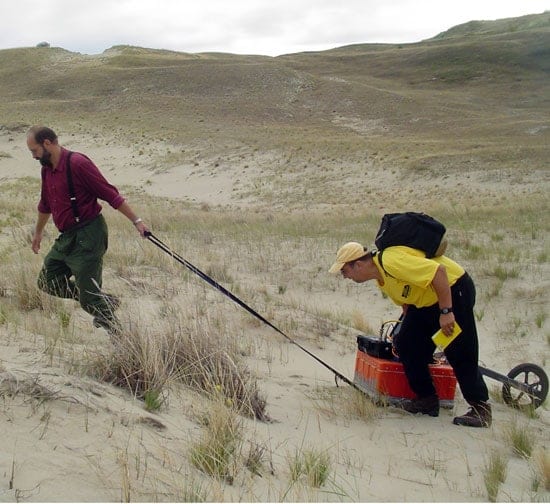Beach Sand Formations Tell Tales of Past Storms
May 1, 2007
Geologists have recently devised a new method for reconstructing the history of severe storms along the coast: examine the steep slopes and cliffs left behind when severe wind and water erode the beach. After hurricanes and Nor’easters make landfall, they move and sculpt the sands into “scarps” while leaving behind a distinct signature of different-sized sand grains. Intense winds blow away the lightest and smallest grains such as quartz, feldspar, and muscovite and leave a surface enriched with heavier minerals such as garnet, magnetite, and ilmenite. WHOI geologist Ilya Buynevich, working with colleagues from Boston University and the University of Nebraska, recently used ground-penetrating radar to find these enriched scarps buried along the coast of Maine. They also collected sediment cores and used a novel technique known as optically stimulated luminescence which uses the crystal structure of the sand, along with a zap of radiation, to figure out when the scarps were last exposed to sunlight at the surface. In the June issue of the journal Geology, Buynevich and colleagues describe how they reconstructed a record of intense storm activity in the Gulf of Maine. The scarps indicate there was a massive storm about 1,600 years ago, followed by long quiet period, and then a rise in storm activity in the past 400 years.
Related Links

